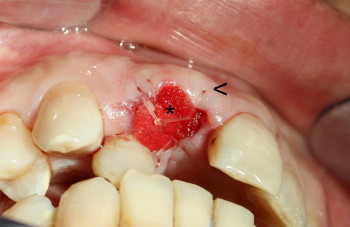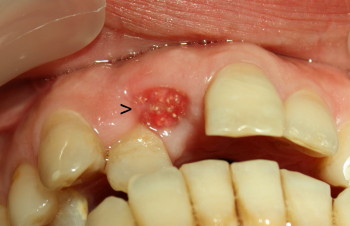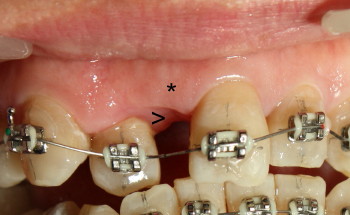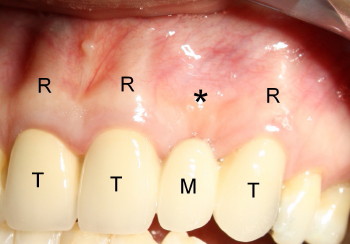



 |
 |
| Fig.1 | Fig.2 |
 |
 |
| Fig.3 | Fig.4 |
Dental Education Lecture: No Trauma Extraction
When our tooth becomes not savable, we consider extraction and ways to restore it. If we are planning to place an implant for the tooth, we should reduce trauma to the bone holding the tooth as much as possible while taking out the tooth. This type of extraction is called atraumatic (no trauma) extraction. In brief, for implant success, we need good solid bone, just like a big building needing solid foundation.
Mrs. Jiang had an accident and broke one of her front teeth. It needs to come out. We decide to adopt atraumatic extraction. First use special instruments to remove the tooth without further damage to the surrounding bone. Then we place artificial bone into the socket, cover the wound with a special gauze (* in Fig.1 to prevent bone chips falling out) and suture up (arrowhead). Without the artificial bone, our socket and gums shrink after extraction. Fig.2 shows the healing wound one month after extraction: arrowhead pointing to yellow granules of artificial bone mixed with healing red tissue.
With these proper measures mentioned above, the wound completely heals (arrowhead in Fig.3) without too much shrinkage (*) eight months after extraction. We are doing braces now before placing implant.
By contrast, there is severe shrinkage of the bone and gums after extraction without the technique of atraumatic extraction (* in Fig.4). M stands for the missing tooth. A bridge is used to fix the lost tooth. T stands for teeth to support the bridge. Without placement of implant soon, our bone keeps shrinking.
Xin Wei, DDS, PhD, MS 1st edition 05/30/2010, last revision 02/19/2017